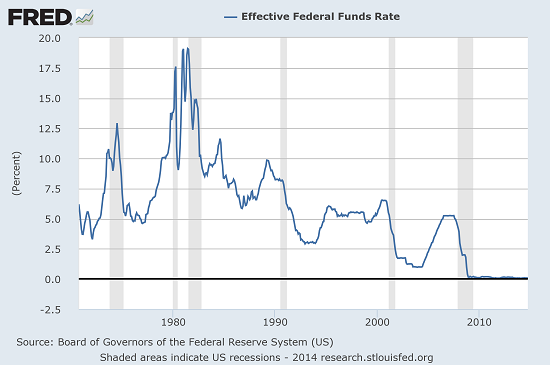The Fed lays the groundwork for change
Change is the one constant in the universe. So, it's no surprise that after years of coddling the economy with hundreds of billions in bond purchases and holding interest rates near zero percent for even longer, the Federal Reserve is finally moving toward normalizing its policy stance.
This was the takeaway from the October meeting minutes released earlier this week, and it's a pretty big deal.
The October policy statement itself, released on Oct. 29, was notable for confirming the end of the "QE3" bond-buying (which was started in late 2012) as well as talking up the job market's recent strength, including the drop in the unemployment rate to just 5.8 percent. The center of balance on the Fed policymaking committee seemed to have shifted, with the most dovish member dissenting against the statement on concern the U.S. economy wasn't healthy enough to stand on its own yet.
This was a big change from what we had seen in prior months, when the two most hawkish members dissented on concerns the Fed was doing too much for too long.
The meeting minutes provide color on the committee's internal debate. And they revealed that while policymakers were cognizant of risks to their optimistic outlook -- including recent stock market volatility, weakness in economies in Asia and Europe, and the recent cooling of inflationary pressure due to lower oil prices -- they felt good enough about the situation to omit any mentions of these concerns in the policy statement.
Instead, the debate seemed to focus on when to drop the "considerable time" language from the statement -- referring to how long interest rates will remain near zero percent. This is widely translated as equating to roughly six months or so, despite the efforts of Fed officials to dissuade people from this idea.
Nevertheless, removing this language is seen as the first step toward a short-term interest rate hike and that removal could come as soon as the Fed's December policy meeting if the economy remains on track. The minutes revealed a discussion about the possibility of replacing "considerable time" with more specific guidance on the pace at which interest rates will rise once the Fed commits to hiking cycle, the last of which started back in 2004.
Investors should prepare for turbulence as we move closer to the inevitable increase in borrowing costs because so much of the market's rise has been supported by the Fed's ultralow interest rate policy. Low rates have bolstered corporate bonds, which in turn have fueled corporate buyback programs and profit margins, which in turn have bolstered share prices.
Once this dynamic ends, as rates rise, both corporate bond and stock prices could come under pressure.
Some Fed officials noted as much, warning that "further pockets of turbulence were likely to arise as the start of policy normalization approached."
After an impressive rebound out of the Oct. 15 market low, investors would be well served to consider raising cash and thinking more defensively as the Fed prepares to pull the plug.

